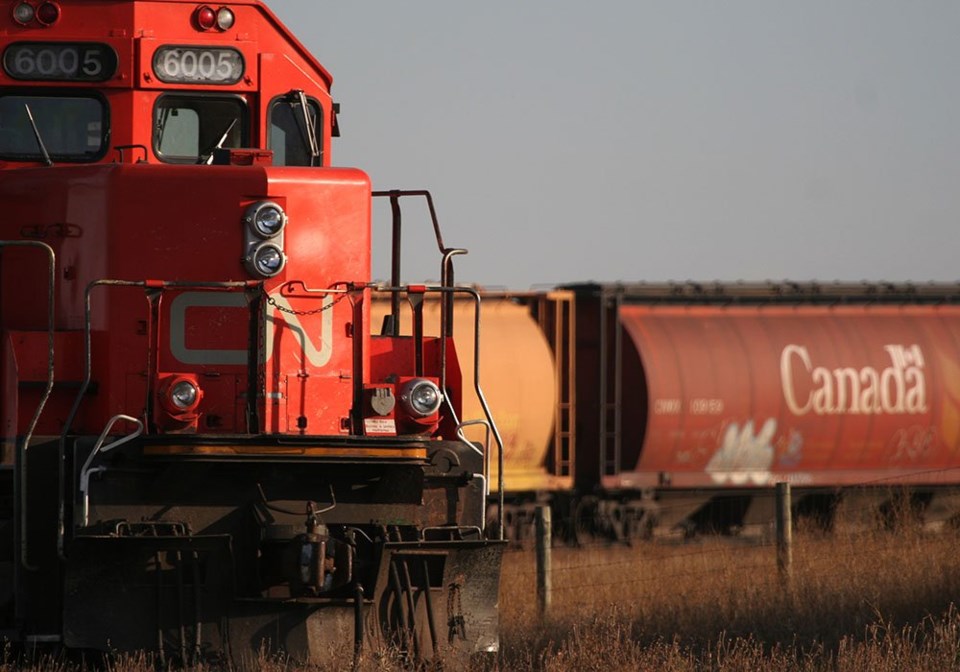B.C.’s economy could be in for a serious system shock, as the threat of strikes loom at both of Canada’s railways, as well as the Port of Vancouver
Railway workers with the Teamsters Canada Rail Conference (TCRC) at both Canadian National Railway Co. (TSX:CNR, NYSE:CNI) and Canadian Pacific Kansas City Ltd. (TSX,NYSE: CP) voted to strike in May.
The job action was temporarily paused, after Canadian Labour Minister Seamus O’Regan ordered the Canada Industrial Relations Board (CIRB) to consider whether a railway strike would be detrimental to the health and safety of Canadians. In essence, it is considering whether or not railways, or parts thereof, should be deemed an essential service.
A decision on that question is expected Friday.
Meanwhile, the Freight Management Association and the Greater Vancouver Board of Trade (GVBOT) are warning it could be a case of double trouble in B.C., because ports here would be not only affected by a strike by railway workers, but of dock foremen as well.
The International Longshore and Warehouse Union (ILWU) local 514, who represent more than 700 dock foremen at the Port of Vancouver, will be conducting a strike vote on August 9.
GVBOT president Bridgitte Anderson notes that it is “unprecedented” for both of Canada’s railways – CN and CPKC – to be facing strikes at the same time.
“We are facing an unprecedented potential for work stoppage with both CN and CPKC,” Anderson said. “In addition, the (ILWU) Local 514 are threatening to shut down critical terminals on Canada’s west coast, which could lead to a replay of last year’s work stoppage which saw $10.7 billion of trade disrupted.”
She referred to last year’s strike by Port of Vancouver dock workers with the International Longshore and Warehouse Union Canada.
“It is estimated goods valued at $1.04 billion move by rail every day in Canada, a total of $380 billion per year, delivering $200 billion worth of Canadian exports to markets across North America and around the globe," Anderson said.
“We are calling for clear communication on a timeline from the CIRB to ensure businesses can plan accordingly. We also call on the Government of Canada to use the tools in their toolkit and potentially explore new methods to ensure we have certainty and stability in our economy.”
“This is going to be devastating,” said John Corey, president of the Freight Management Association. “This is going to be worse than COVID. At least during COVID, trucking and rail were deemed essential, and goods kept moving. This is like if both Air Canada and WestJet went on strike at the same time.”
Last year's 13-day strike by longshore workers at the Port of Vancouver cost about $800 million a day and took months to clear a backlog, according to the Port of Vancouver.
"We are concerned about the prospect of further labour disruptions impacting port and supply chain operations -- damaging Canada’s economic prosperity and our reputation as a reliable trading partner," the Vancouver Port Authority said in a statement to BIV News.
A strike by railroad workers would have severe and immediate impacts. B.C. resource companies that ship bulk commodities like coal and lumber might have to take curtailments, and it would cripple port operations, said Ken Peacock, chief economist at the Business Council of BC (BCBC).
“In effect, this does shut down the ports as well,” Peacock said.
The Teamsters represent thousands of conductors, conductor trainees, yard coordinators and locomotive engineers across Canada.
Corey notes that the CRIB will be considering whether things like chlorine for disinfecting drinking water or propane for heating and cooking in Canada’s north are essential to the health and welfare of Canadians.
Under the Canada Labour Code, section 87.4(1) provides that, in the event of a strike or lockout, the supply of services or operations must continue, “to the extent necessary to prevent an immediate and serious danger to the safety or health of the public.”
“That’s a pretty narrow scope,” Corey said. “So even if the CRIB on Friday comes down and says, ‘yes they are essential,’ what is that going to look like? Does it mean only chlorine and propane are going to be moved? Is there going to be a cross-country train with seven tank cars on it? I don’t think that’s practical.
“What about everything else? What about coal, potash? What about petroleum, what about lumber? What about containers?”
Given how dependent Canada is on railways for the movement of both imports and exports, a strike that lasts even a day or two can have profound consequences for supply chains, Corey said, because the trucking sector simply can’t take up the slack.
“There is not enough trucking capacity in Canada of pick up the slack of two railways going on strike,” he said. “So trucks are out, which means there’s no alternative.
“For every day that there is an actual rail strike, it takes about a week to clear out the supply chain. So if you have a week of strike, that’s going to take months to clear up. If the railways went on strike tomorrow, it would be billions of dollars – a billion dollars a day.
“Even the threat of a strike changes people’s behaviour, because at this point shippers are looking for alternative routings or different methods of moving their goods.”
(This story has been updated with information from the Vancouver Port Authority.)




